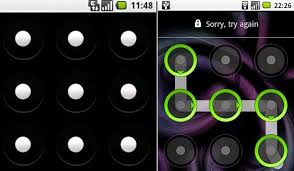How best to secure your data without passwords
The reason why so many people use the same simple password for every login is because it is difficult to remember dozens of different combinations of numbers and letters. Technology is on the verge of rendering passwords obsolete and also bolstering security.
Security experts with Deloitte Global, an international network of business management consultants, have revealed that weak or stolen passwords are a root cause of more than three-quarters of corporate cyber-attacks which often cost many millions of dollars in technology, legal, and public relations expenses.
According to the security experts, the ability to access digital information securely without the need of a username and password represents a long-overdue upgrade to work and life as passwords lack the scalability required to offer users full digital user experience.
Digital transformation has ushered in new and more secure ways of protecting users’ data.
Emerging technologies such as blockchain are positioned to replace the vulnerability of the single password mechanism with multiple factors which fortifies security by requiring additional checkpoints, making it difficult for a cybercriminal to steal your identity or to impersonate you, the expert say.
Another new login method which provides greater user experience, according to the experts is multi-factor authentication. Gmail, among others, currently deploy this method which enhances security with authentication taking place over two devices owned by the user.
With this method, the experts say a cyber criminal would have to have access to the user’s phone, in addition to his or her online password, to get at the protected account.
They explained that this method can vary in a two-factor authentication process, for example, a user could scan his or her retina via the camera on her laptop or Smartphone, using biometric identification as a first step to gain access to his or her online bank account.
In a second step, the bank could then send a challenge via text message to the user’s mobile phone, requiring the user to reply with a text message to finish the authentication. The most popular new factors for authentication is biometric technologies, which require no memorization of complex combinations of letters, numbers, and symbols, much less which combination you used for which resource.
It’s simply part of the you; your fingerprint, voice, face, heartbeat, and even characteristic movements. Biometrics that can be captured by Smartphone cameras and voice recorders will likely become most prevalent, including fingerprint, iris, voice, and face recognition.
Checking your biometric data against a trusted device owned by you alone as opposed to a central repository is emerging as the preferred approach, the experts asserted, stating that this approach allows you to use your fingerprint to access a particular resource on your own smartphone, which in turn sends its own unique device signature to the authentication mechanism that grants you access.
Another set of authentication method, revealed by the expert, come in the form of “what you have” such as security tokens carried, software-enabled tokens, or even an adaptation of block-chain databases used by bitcoin. Hardware USB keys enable users to login by entering their username and password, followed by a random pass-code generated by the fob at set intervals of time.
Software tokens operate similarly, with a Smartphone app, for example, generating the codes. Further off, the potential use of distributed block-chain technology could help provide a more secure and decentralized system for authentication, the security expert explains.




Comments
Post a Comment